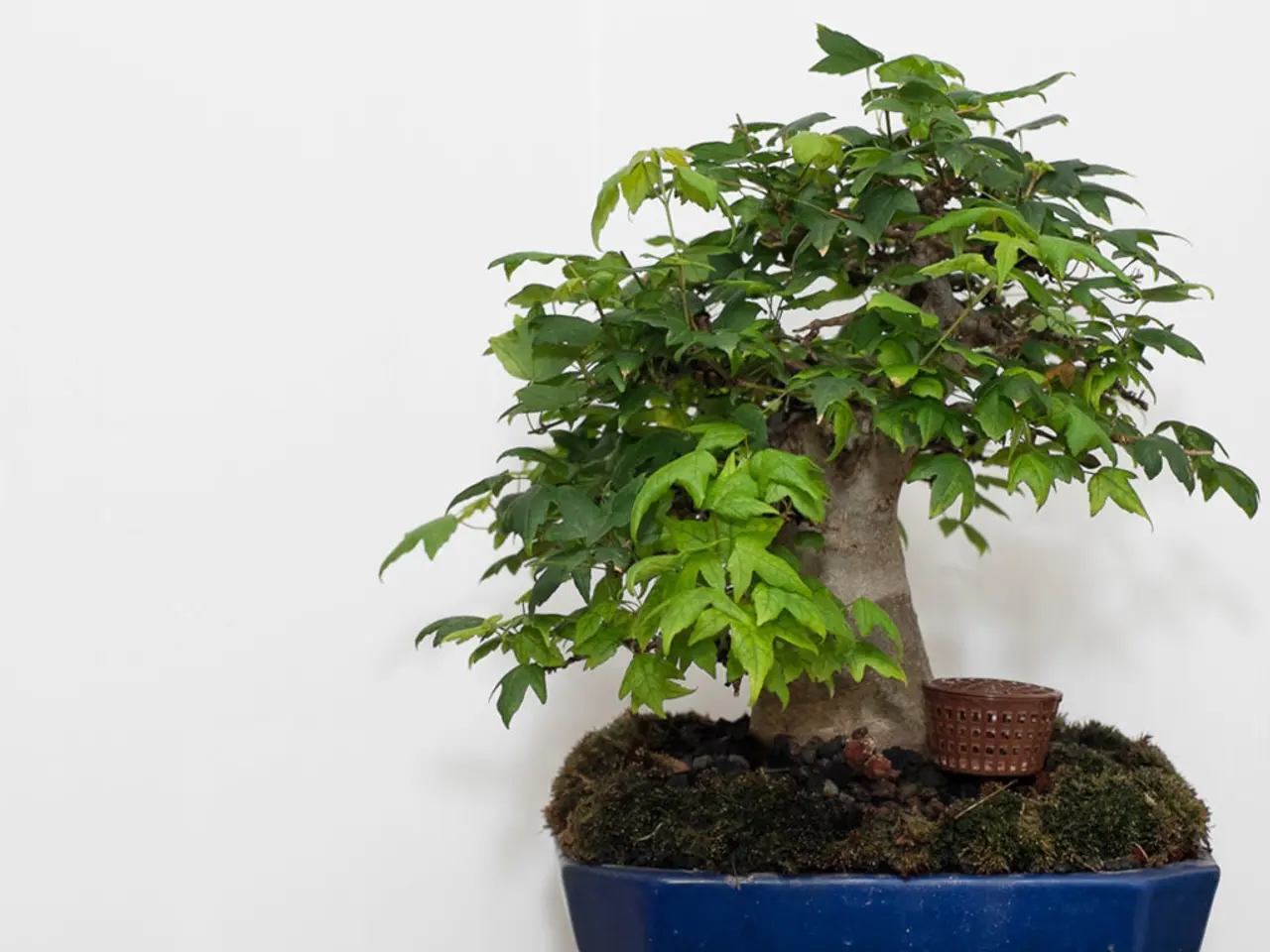Nurturing Japanese Black Pine Bonsai: Essential Guidelines
The Japanese Black Pine Bonsai, a centuries-old form of gardening popular worldwide, is a slow-growing tree often used in bonsai for its unique shape. Native to Japan and Korea, this variety (Pinus thunbergii) thrives in a semi-humid environment and prefers temperatures between 50 and 70 degrees Fahrenheit.
One key aspect of caring for Japanese Black Pine Bonsai is understanding its growth habits. Due to their slow growth rate, these trees do not require a lot of fertilizer. An easy way to fertilize them is with a specially formulated Bonsai Plant Food that can be applied with every watering. In hot climates or during the summer, watering may need to be increased.
When it comes to repotting, it's essential to soak the tree in water for 30 minutes to soften the roots before carefully handling them. Repotting should be done every 2-3 years for young trees and every 3-5 years for older trees, in early spring before new growth begins. Be mindful not to damage the roots during the repotting process.
Propagating Japanese Black Pine Bonsai through cuttings is not a straightforward process due to the difficulty in rooting and producing true-to-parent plants. While it can be done, seed propagation or grafting are often more effective methods for cultivating strong, healthy trees suitable for bonsai cultivation.
For those interested in propagating pine species, here are some general tips:
1. Choose vigorous, healthy growth from the current season. For Japanese Black Pine, it's crucial to select cuttings during the right time, typically early spring when new growth is emerging. 2. Cut the stem section using sharp, sterile tools. Remove lower leaves or needles to prevent moisture loss and promote rooting. 3. Plant the cutting in a well-draining propagation medium, such as a mix of peat moss and perlite. 4. Place the cuttings in a warm, humid environment with indirect light. 5. Apply rooting hormones to the cut end to increase the chances of successful rooting.
Pruning and wiring are essential for shaping and controlling growth in Japanese Black Pine Bonsai. These activities should be done in late winter or early spring, and care should be taken not to damage the bark when wiring.
Japanese Black Pine Bonsai can be grown indoors, but they require careful attention to thrive. One way to determine when to water them is to stick your finger into the soil up to the first knuckle; if it feels dry, it's time to water. Avoid letting them sit in water, and try to avoid getting water on the leaves.
There are several styling options for Japanese Black Pine Bonsai, including formal upright, informal upright, and cascading styles. When choosing a soil for these trees, it is important to select one with good drainage, such as sandy soils or those with high organic content.
With proper care, Japanese Black Pine Bonsai can live for 100-200 years in the wild, and even longer in captivity. These timeless trees make for rewarding additions to any bonsai collection.
Incorporating Japanese Black Pine Bonsai into one's home-and-garden lifestyle necessitates understanding its specific care requirements for maintaining plant health. For instance, the usage of Bonsai Plant Food and a well-draining soil and the careful handling during repotting can contribute to a healthy growth and long lifespan of these bonsai trees, which are ideally planted in stylish and creative containers for an aesthetic appeal within the garden or home.




